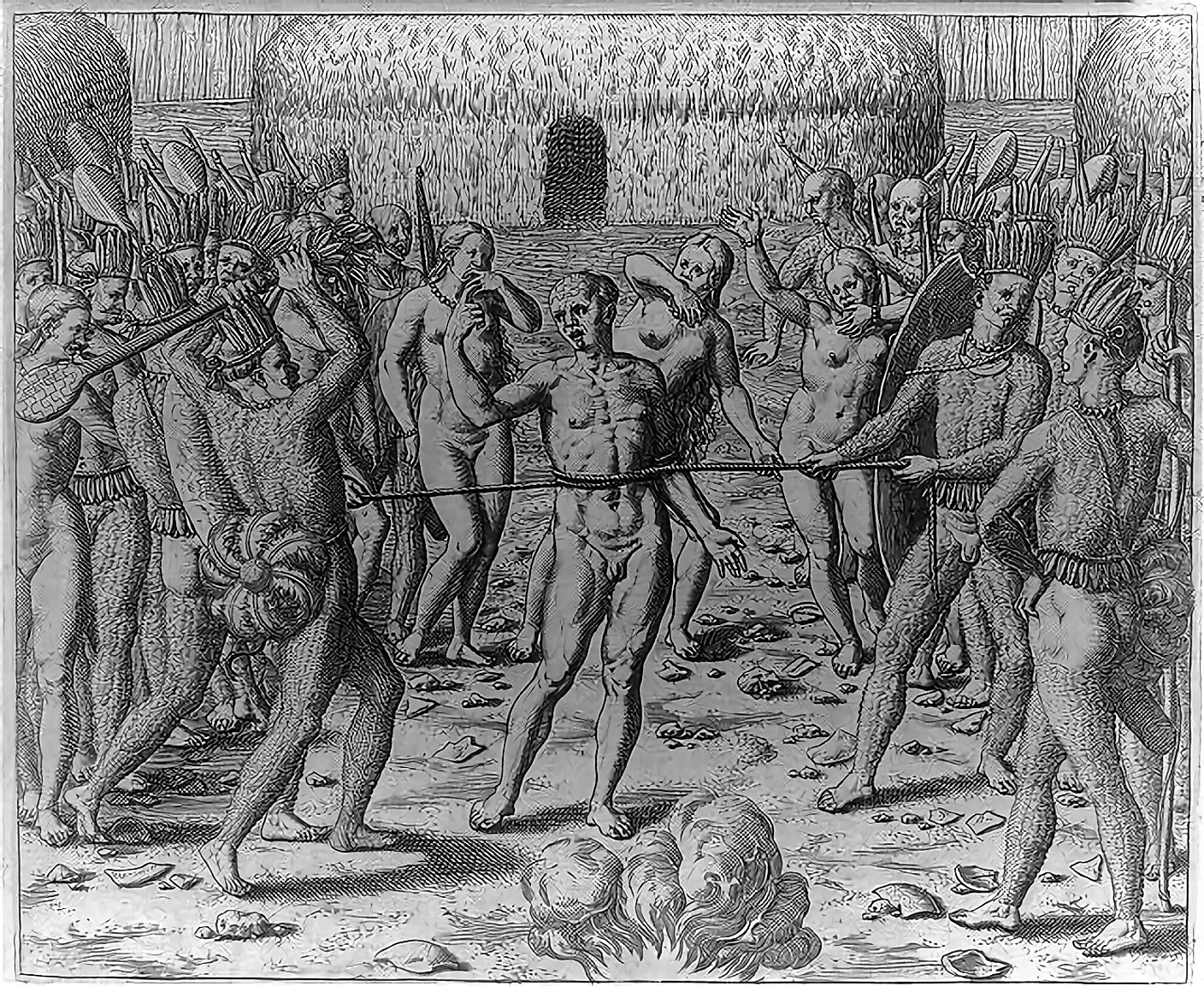
Historical Methods Of Execution
History is written in blood, and few things expose the cruelty of the past more than the ways societies chose to end a life. Execution was never just about punishment—it was a performance of power, a warning carved into flesh and bone. Some methods were designed for agony, like flaying, where skin was peeled from the body in strips, or impalement, a slow and excruciating death stretching over days. Others, like immurement, sealed the condemned within walls to await starvation in utter darkness. From the searing pain of boiling alive to the gruesome fate of being hanged, drawn, and quartered, these punishments were meant to do more than kill—they were meant to terrify.
Boiling
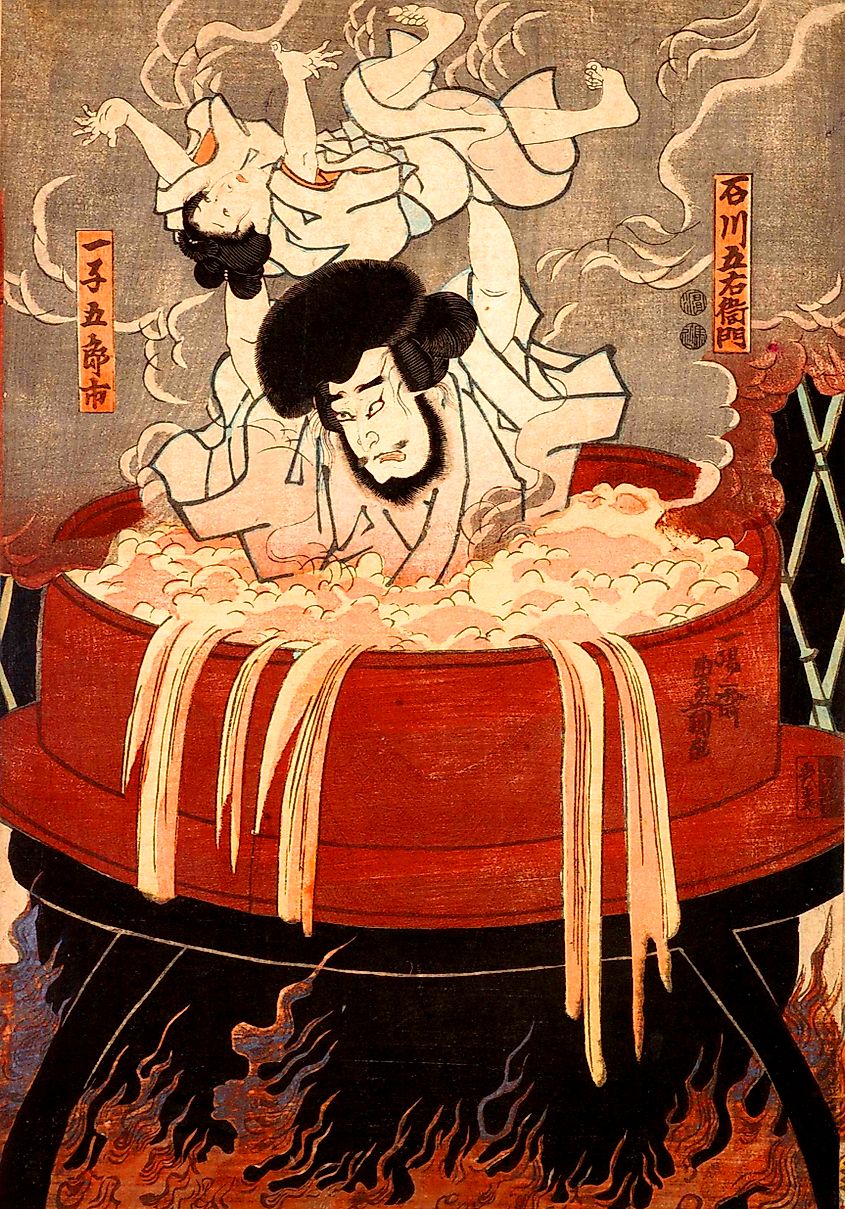
This slow and agonizing method of execution involved the torturously dragged-out lowering of the victim into boiling oil, water, wax, or even wine or lead. Some would remain conscious through the initial stages of the excruciating sensations of their outer skin layer getting dissolved. Then, the complete destruction of the fatty tissue underneath would come into effect, followed by a continuous boiling everything underneath. Although it is often considered that the most torturous executions where victims can feel every step and stay conscious were reserved for those who committed the most gruesome crimes and horrendous murders, historical records state that this method was used on thousands of Christians by Emperor Nero. Similarly, in the Middle Ages, mere coin forgers would receive the fate to die by this death, which was mainly practiced in France, Germany, and the Holy Roman Empire between the 13th and 16th centuries. King Henry VIII of England also used this method on those who would fatally poison someone.
Confined Alive (Immurement)
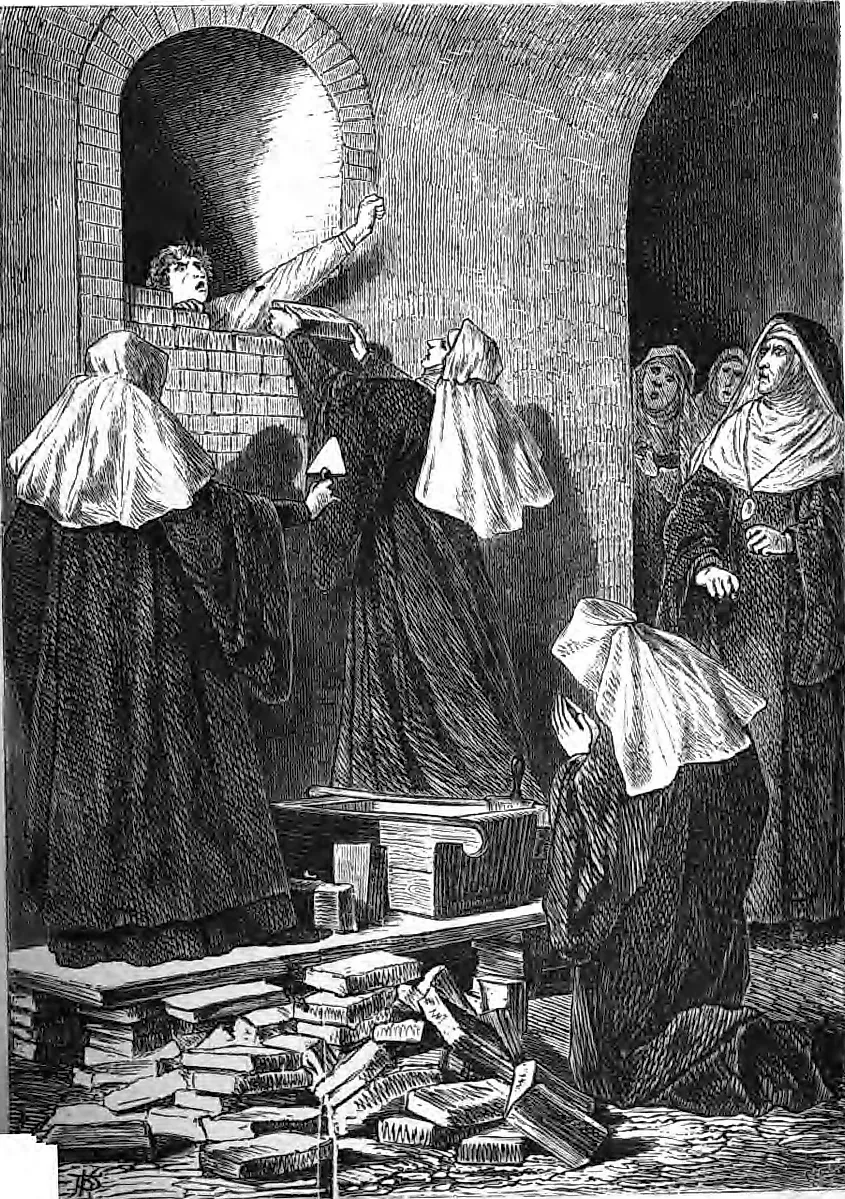
The convicted person would be placed into an enclosed space with no way to escape, with the message to the victim being imprisoned for life, which shall no longer be extended, upon dying from dehydration or starvation. A notable moment in history, published in the 1922 issue of the National Geographic journal, involves the inability of a travel photographer, Albert Kahn, upon witnessing a Mongolian woman committed into a small box for adultery. She would beg for food, and he could do nothing about it, as that would go against another culture’s criminal justice system. A report from a Chinese newspaper in 1914 fixated an instance when immurement involved entombing one in a heavy iron-bound coffin, where sitting upright or lying down was impossible. With another method involving confining a person alive behind a wall, immurement was essentially a mentally torturous slow-burn way of killing someone.
Crucifixion
In Ancient Rome, justice was class-based, with slaves having to display evidence in court under torture. It was also for them and the second-class Romans, known as humiliores, that the method of execution through crucifixion was reserved, with only some upper-class citizens getting subject to this death penalty. The convicted people to be crucified would be stripped naked and beaten with ropes or whips, upon which they would be forced to carry a huge wooden cross to their ultimate death spot. There, once nailed to the cross by hands and feet, they would accept stabbing, beating, and humiliating by soldiers and mere bystanders, who would want to have their way with the victim. Interestingly, it was considered merciful to be crucified head-down, making death arrive sooner, while the actual cause of death could be different every time. It would range from septic shock due to the open wounds or asphyxiation when the victim would get so exhausted from supporting their own body that they would stop breathing. Done in public as much as possible, the procedure was abolished throughout the Roman Empire in 337.
Flaying (Skinned Alive)
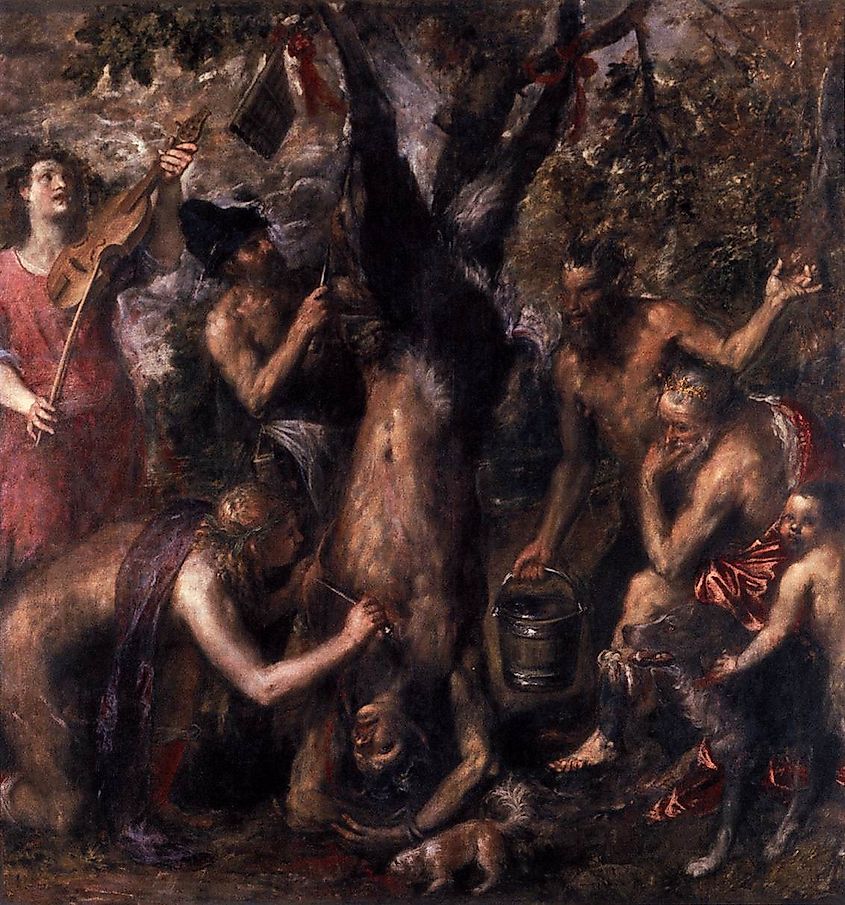
Some say that this death by execution takes the top as being most torturous. It is most painful due to its slow process, with the victim, first, being stripped and bound by hands and feet. A sharp blade was then used to peel away their skin from the head area down, which would inflict the most pain since there are so many nerve endings and the victim is still conscious. At times, pre-boiling particular body parts made the skin softer to peel. Dying from this method was often due to shock, blood or fluid loss, hypothermia, or infection, but the dying time could last from a few hours to a few days. Not a very common method of capital punishment, it meant to send a message that the body, an eloquent of the punitive, could be marked any way that the secular authority would please. Flaying was practiced by a few nations, including the Assyrians, Aztecs, Chinese, and some Medieval European groups. The most notable case of flaying involved a female philosopher, Hypatia of Alexandria, getting flayed by a Christian mob.
Gibbeting

The main reason for gibbeting or the public display of a criminal’s death was to deter the spectators from committing those crimes. Done in a prolonged and painful manner, where the victim would stay conscious, screaming as long as they could, the executors would deliberately make a show of the execution. The graphic visualization included hanging the victim's lifeless body in an iron cage and displaying it in an open area for public viewing. This type of capital punishment was used in Scotland on convicted murderers, with the Murder Act of 1752 stating that the bodies of executed murderers shall be either dissected or hung in chains. The last use of gibbetting was recorded in the late 1770s but remained a legal option until 1834. The most known gibbetting case was Alexander Gillan's conviction, who was a farmer’s servant, having raped and murdered an 11-year-old girl, Elspet Lamb, in 1810, when she was herding her father’s cattle. The lord justice clerk considered that the magnitude of the crime reasonably matched that of the punishment. Demonstrating so, he gibbeted Gillan at the very place that the crime took place, hanging his body in chains to serve as a reminder of the consequences to others.
Hanged, Drawn, and Quartered
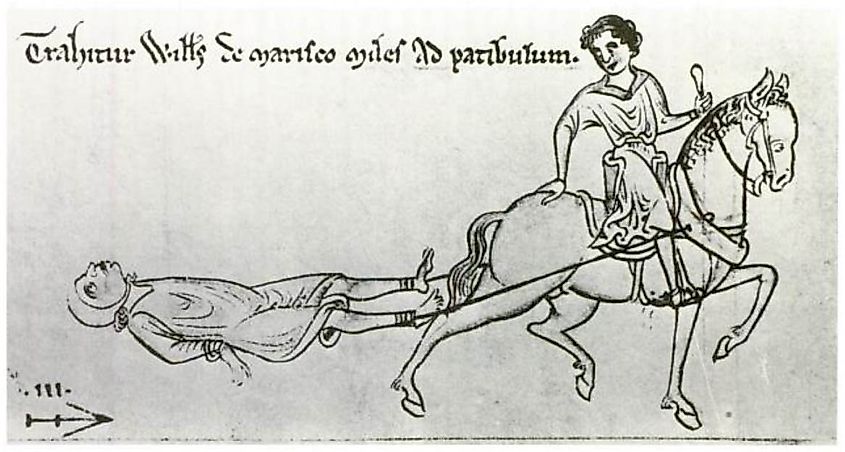
According to English law, capital punishment for women involved burning at stake, a more "decent" way to go, while the men convicted for high treason would be hanged, drawn, and quartered. The process would involve getting tied to a hurdle or a sledge and dragged by a horse to the place of execution. Hanged without a drop, which ensured that their neck wouldn't snap, the executors would then wait until the man was almost dead upon cutting him down, slicing off his genitals, and opening the stomach to gut the criminal. At the final stage, the victim would get beheaded, also known as post-mortum decapitation, and the body would be divided into quarters. The head and the quarters would then get parboiled to prevent rotting and displayed on the city's gates. Invented in 1241 to execute William Maurice for piracy, the method kept being used in its whole spectre daily until the disemboweling portion was formally removed following The Treason Act of 1814, replacing it with hanging that would snap the neck bone.
Impaling
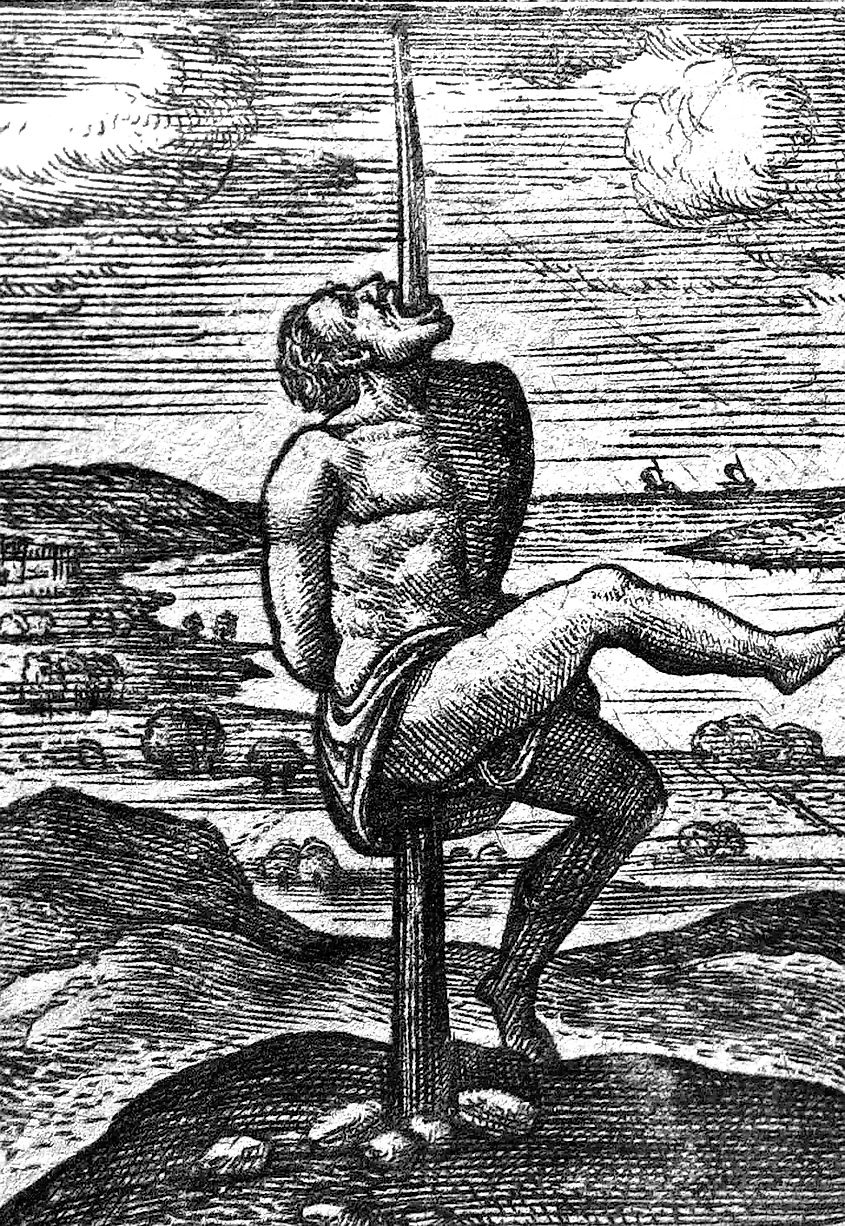
This renowned execution by Vlad, the Impaler, the famous 15th-century ruler of Wallachia, present-day Romania, was also the inspiration for Count Dracula. While depicted in pop media that the death arrives quickly by impaling through the midsection, in reality, the process was drawn out to be a genuinely torturous and horrific ordeal, with rapid death rarely occurring. The real-life process involved sharpening and fixing the stake up in the ground, with the victim placed over it and the spike inserted partway into their vagina or rectum. With the victim's body weight dragging them further down the wooden stake, their organs would get pierced in agonizing slowness, upon eventually penetrating the entire torso. The stake would exit the victim's body through the shoulder, neck, or throat. It was first used in 1772 BC in Babylon by King Hammurabi, who would order the women to be executed as a punishment for killing her husband. Some say it would take eight days to die, while the method was used until the 20th century, with the last record being by the Ottoman government during the Armenian genocide of 1915-1923.
Rat Torture
Since rats would virtually eat through anything that comes in their way, rat torture was considered one of the worst ways to go in the ancient world. The execution would involve putting the victim into a small cage with a rat positioned against their stomach. Heated from the outside, the cage, either with a candle, a flaming stick, or hot coals, would become so warm that it would ultimately anger the rat. Upon attempting to escape the unbearable environment, the rat would claw at the victim's stomach, quickly gnawing the way into the guts through the soft skin. Feeling unbearable pain through the process, the psychological element of the torture also involved mental agony, from the knowledge of what was happening to their body. The method was commonly used in Europe during the Dutch revolt of the seventeenth century by the Dutch leader, Diederik Sonay. It was also employed in the South American countries between 1964 and 1990, when the military dictatorships would execute that way in Argentina, Brazil, Chile, and Uruguay. The Game Of Thrones depicts how this execution method was ingenious and disgusting.
The methods may have changed, but the echoes of history’s most brutal punishments still linger. The towering gallows, the iron cauldron, the bloodstained executioner’s block—each a reminder of the lengths societies once went to enforce order, instill fear, or deliver what they saw as justice. Though these horrors belong to the past but are a grim testament to humanity’s capacity for both cruelty and control. In studying these punishments, we do not glorify them—we acknowledge the darkness from which they have emerged.











